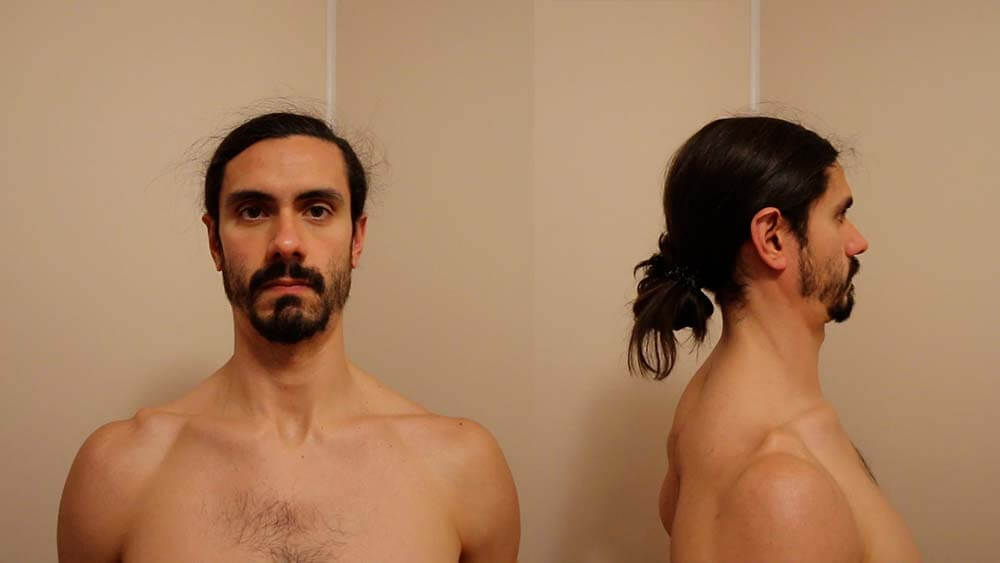
Neutral starting point: pack your neck, crown to clouds, elongate through your spine, ears over shoulders.
Countering compensations: keep everything below your collar bone frozen in time.
Basic functions:
- Flexion: drop forehead to floor.
- Extension: reach chin to sky.
- Lateral flexion (side bend): drop ear to shoulder.
- Rotation: twist side to side.
Special concerns:
When mobilizing the neck, you have to remember your neck is more than one joint. Your neck consists of seven vertebrae. The connection between each of these bones is a joint. In other words, your neck is more like a string of pearls, as opposed to a plank of wood.
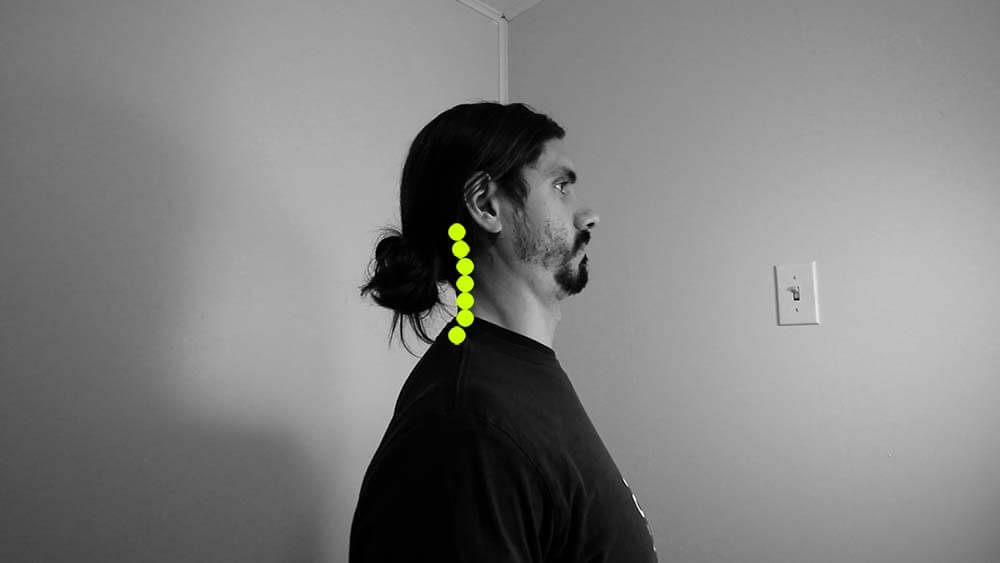
When you’re doing mobilizations that involve flexion, extension, and side bending, you want to do your best to segment your spinal movement. In other words, you want to move each vertebra independently, preserving the shape of the chain otherwise.
Flexion
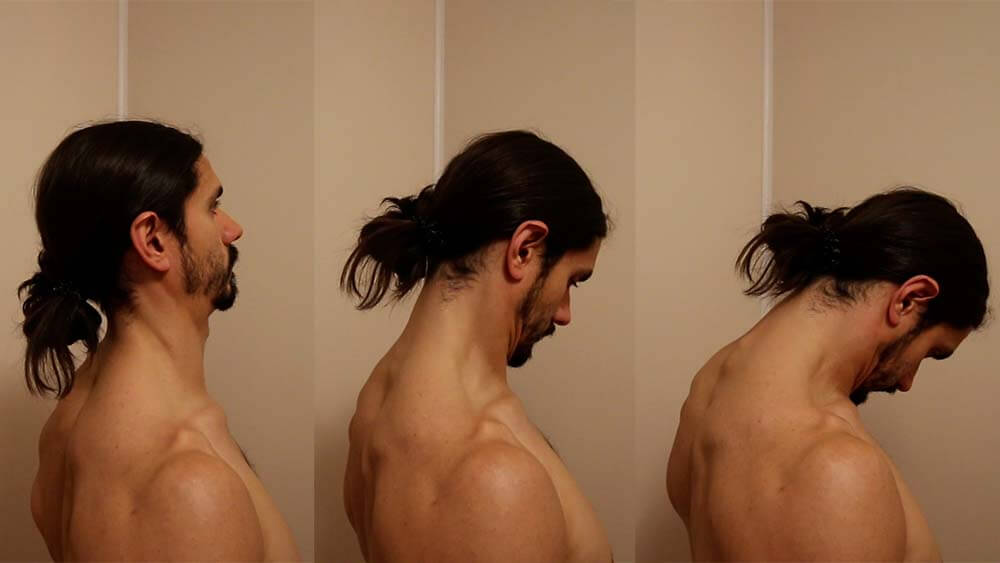
Flexion is dropping your forehead to the ground. For better mobilization, curl each vertebra down individually — one at a time — instead of having your neck topple over like a dead tree.
Start with your first vertebra. Think about spiraling it upon itself, forwards, as if it were a doorknob you were twisting. As you do this, minimize movement down the chain. Twist the top doorknob, keep every other doorknob in its place.
Once you reach the first vertebra’s end range, move to the second… twist… max out your range of motion… third… twist… all the way down the chain.
When your neck is fully flexed, the muscles on the front of your neck should be contracted, the back of your neck should feel a stretch. Pause for a second.
Return to neutral, by reversing the movement. Start at the base of your neck. Spin the bottom vertebra back to neutral. Try to keep the shape of the chain preserved otherwise; your chin should stay tucked, initially. You’re working from the bottom to the top, so the top of the chain shouldn’t be affected by your initial movements.
Continue up the chain, returning each vertebra to neutral one by one until you reach the first vertebra.
Notes:
Watch for shoulder-blade elevation and thoracic spine rounding.
Extension
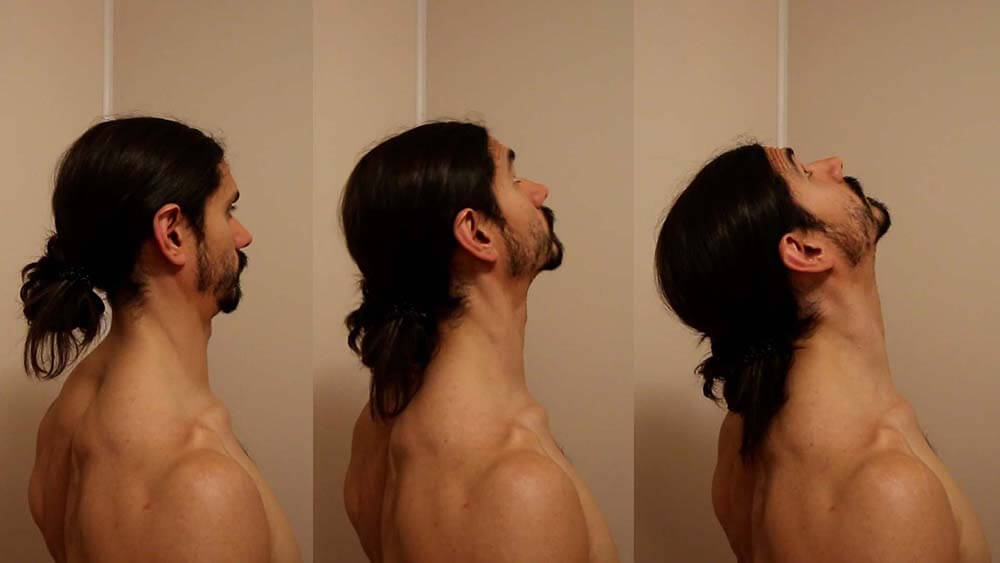
Extension is lifting your chin towards the sky. Approach extension the same way you approached flexion, just in the opposite direction: Curl each vertebra down individually — one at a time — instead of having your neck topple over like a dead tree.
Start with your first vertebra. Think about spiraling it upon itself, backward, as if it were a doorknob you were twisting. As you do this, minimize movement down the chain. Twist the top doorknob, keep every other doorknob in its place.
Once you reach the first vertebra’s end range, move to the second… twist… max out your range of motion… third… twist… all the way down the chain.
When your neck is fully extended, the muscles on the front of your neck should be contracted, the back of your neck should feel a stretch. Pause for a second.
Return to neutral, by reversing the movement. Start at the base of your neck. Spin the bottom vertebra back to neutral. Try to keep the shape of the chain preserved otherwise; your chin should stay high, initially. You’re working from the bottom to the top, so the top of the chain shouldn’t be affected by your initial movements.
Continue up the chain, returning each vertebra to neutral one by one until you reach the first vertebra.
Notes:
Keep your chest down. Don’t lean back.
Side bending
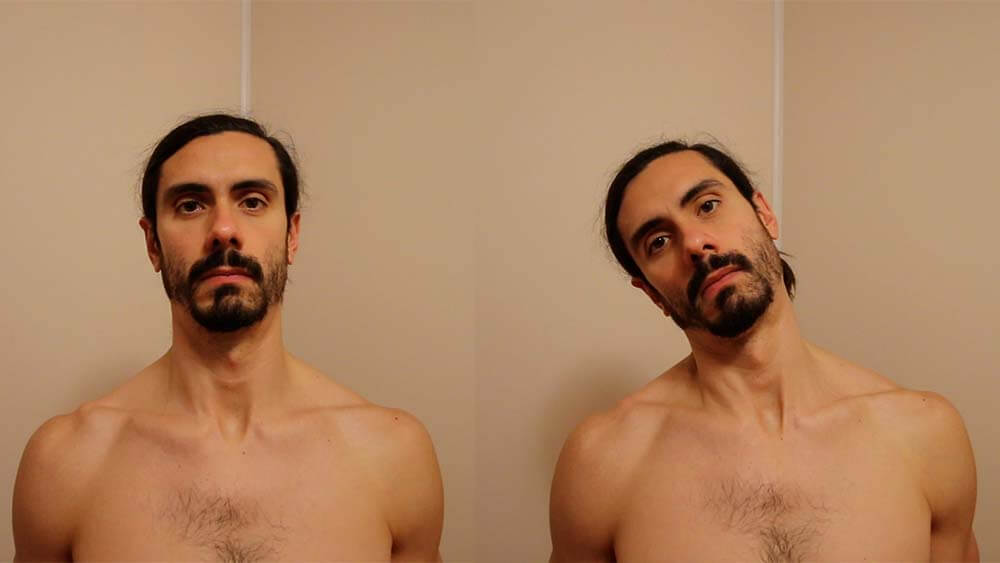
Side bending is dropping your ear to your shoulder. Approach side bending the same way you approached flexion and extension: Curl each vertebra down individually — one at a time — instead of having your neck topple over like a dead tree.
Start with your first vertebra. Think about spiraling it upon itself, to the side, as if it were a doorknob you were twisting. As you do this, minimize movement down the chain. Twist the top doorknob, keep every other doorknob in its place.
Once you reach the first vertebra’s end range, move to the second… twist… max out your range of motion… third… twist… all the way down the chain.
When your neck is fully bent, the muscles on the side of the dropped ear should be contracted, the opposite side should feel a stretch. Pause for a second.
Return to neutral, by reversing the movement. Start at the base of your neck. Spin the bottom vertebra back to neutral. Try to keep the shape of the chain preserved otherwise; your head should stay crooked, initially. You’re working from the bottom to the top, so the top of the chain shouldn’t be affected by your initial movements.
Continue up the chain, returning each vertebra to neutral one by one until you reach the first vertebra.
Repeat in the opposite direction.
Notes:
Don’t drop your head forwards. Keep your ear in the neutral plane during this mobilization.
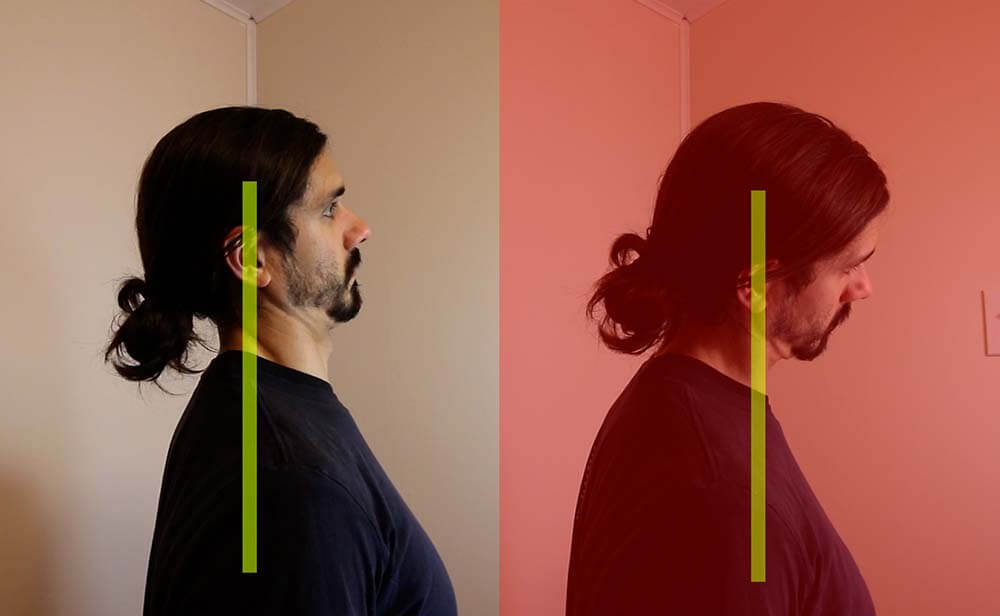
Watch for shoulder-blade elevation on the side opposite of the direction you’re bending.
Rotation
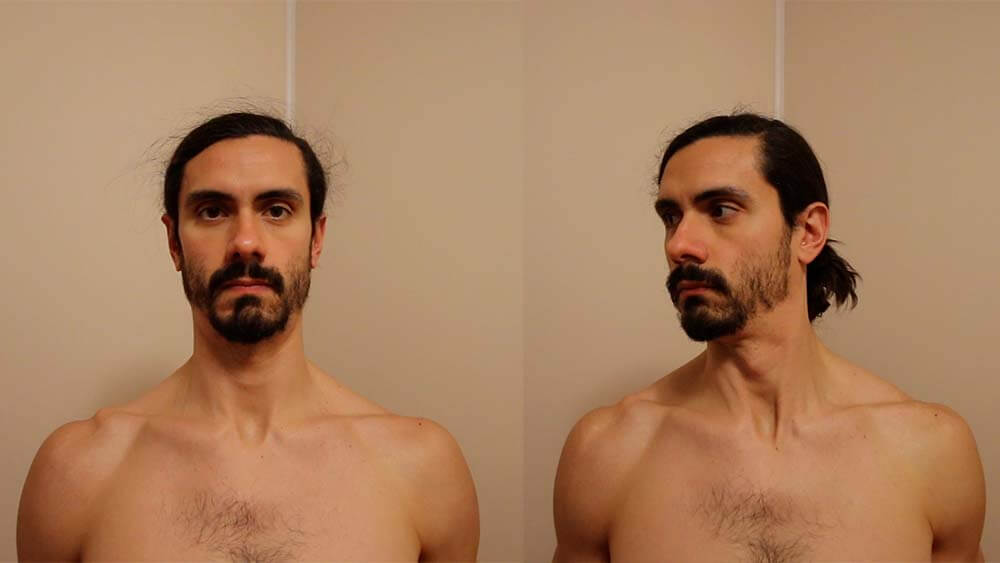
Rotation is twisting your neck. You don’t have to worry about spinal segmentation, as rotation only happens about one joint.
From neutral, rotate your neck in one direction. Pause at your maximum range of motion for a second. Return to neutral. Repeat in the opposite direction.
Notes:
Keep your neck in the neutral plane. Don’t drop your head forwards in order to access more range of motion.
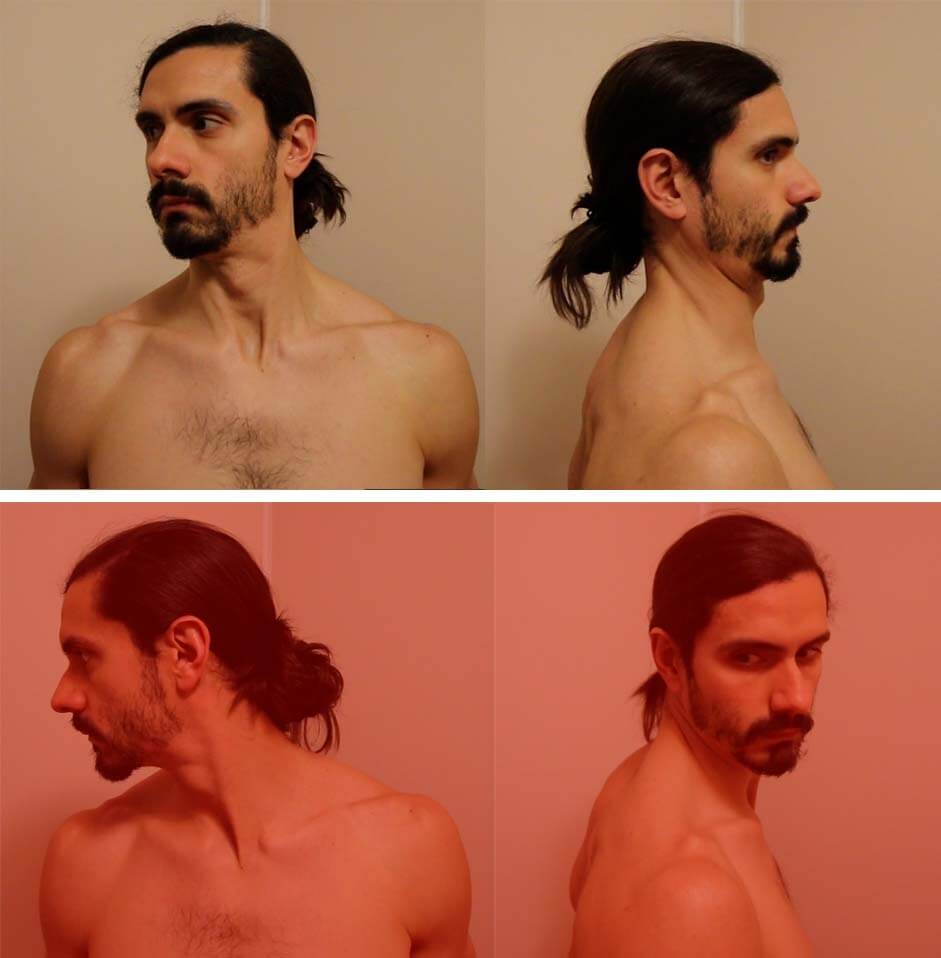
3-D ROTATION
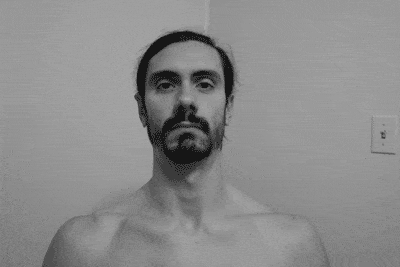
The 3-D rotation is a combination of all of the 2-D mobilizations.
First, assume neutral.
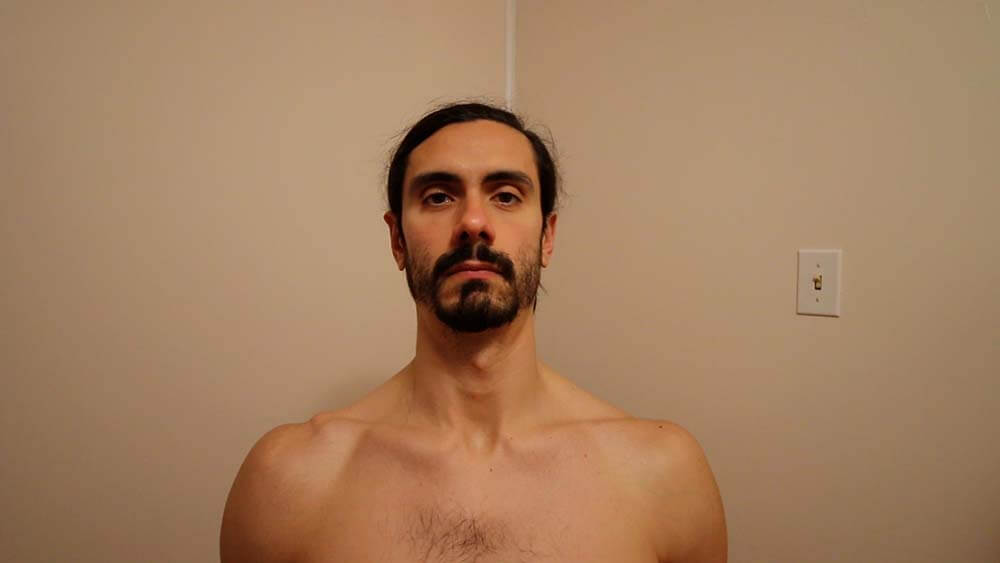
Start with flexion and your topmost vertebra. Spiral each vertebra downward, one at a time.
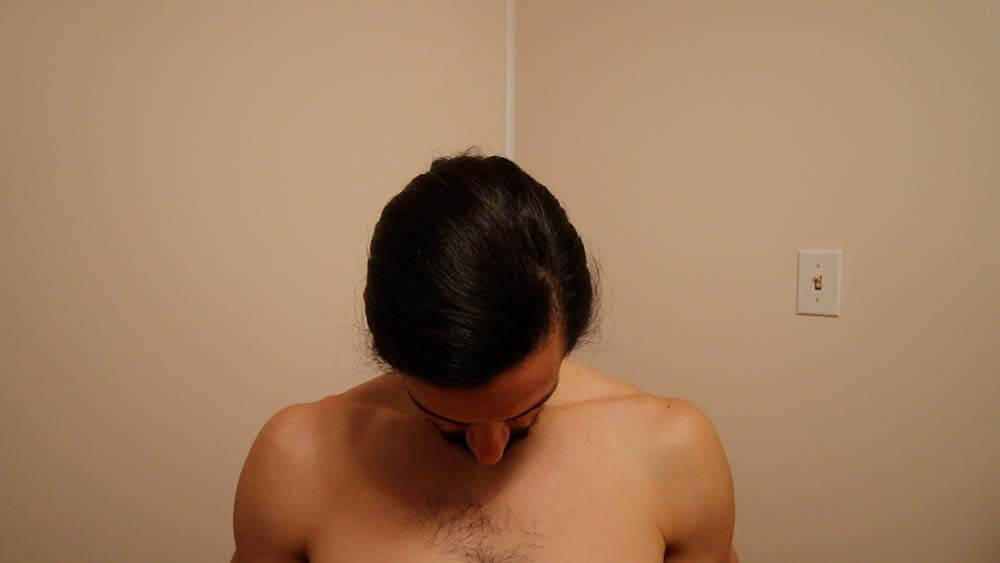
Once you finish flexion, rotate. Trace your chin across your chest as far as you can.
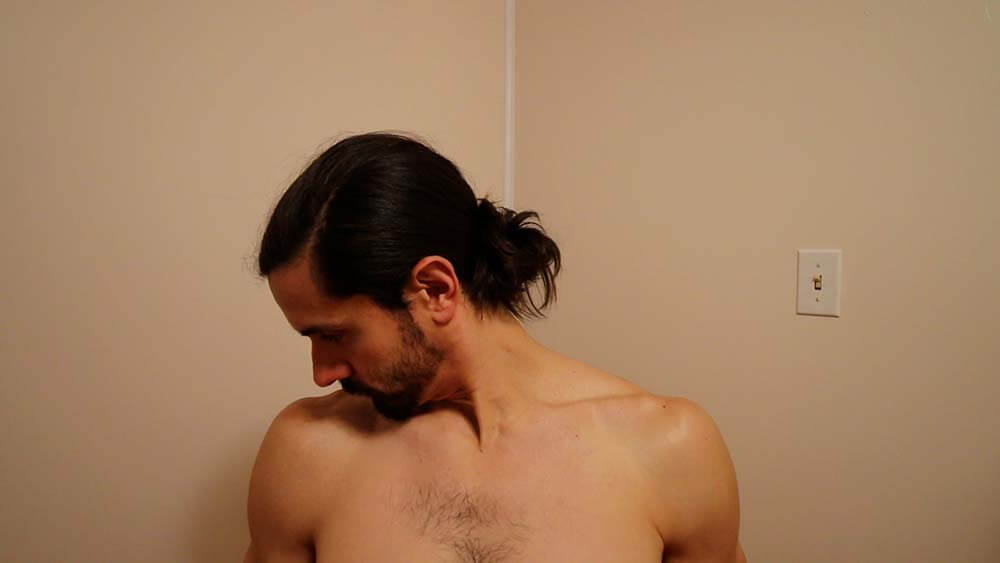
Once you finish rotation, side bend. Starting with the topmost vertebra, put your ear into your back pocket.
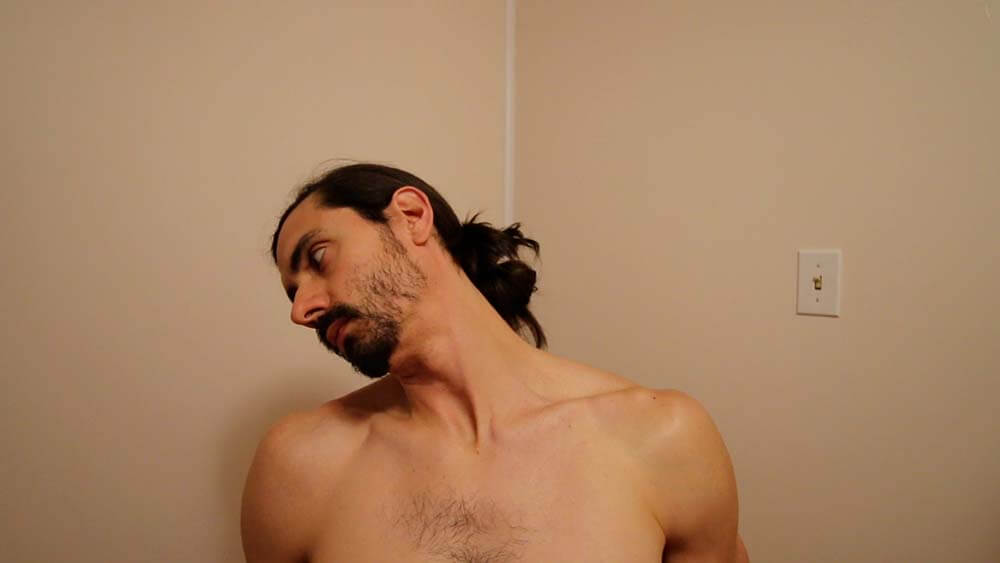
Once you finish side bending, extend. Starting with the topmost vertebra, spiral your chin towards the sky.
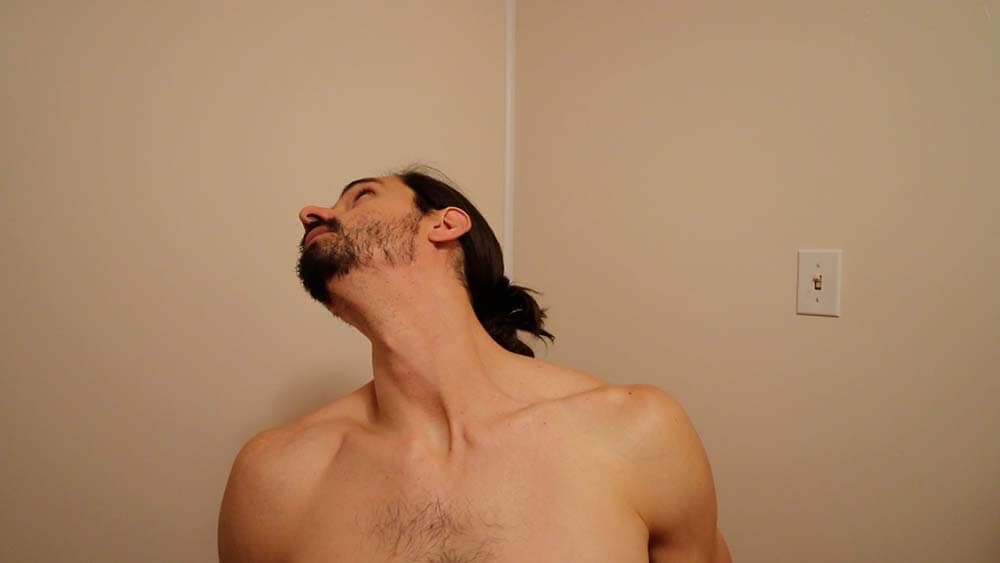
Once you finish extension, rotate. Draw a rainbow in the sky with your chin, across your body, until you have your opposite ear tucked in your opposite back pocket.
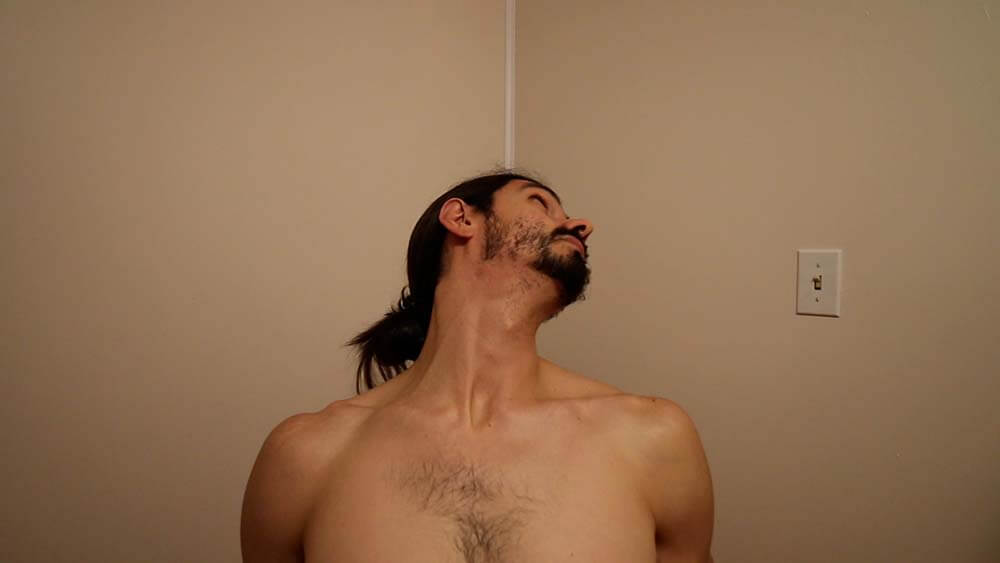
Once you finish rotation, flex. Starting with the topmost vertebra, tuck your chin to your chest.
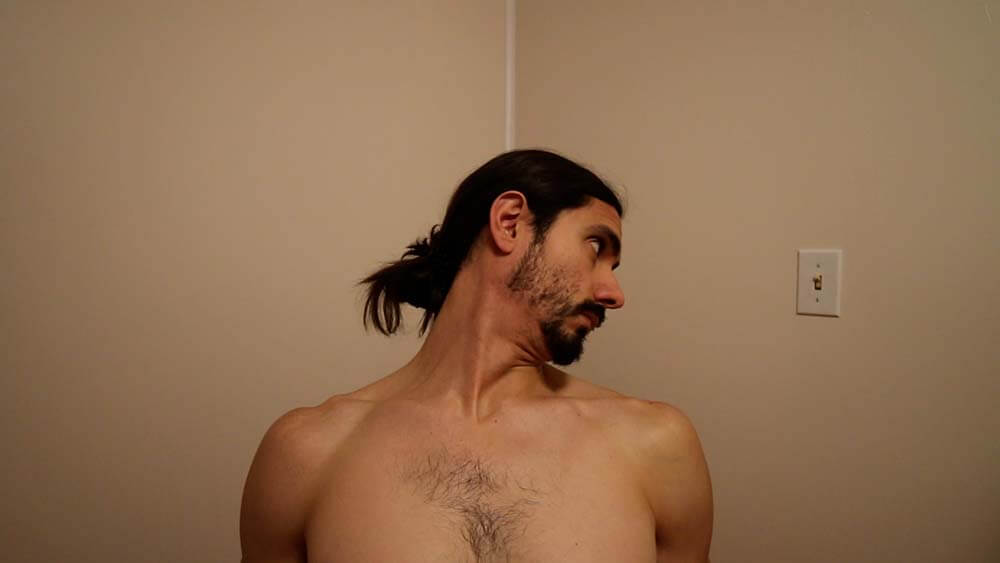
Once you finish flexion, undo the side bend. Starting with the topmost vertebra, take your ear out of your back pocket.
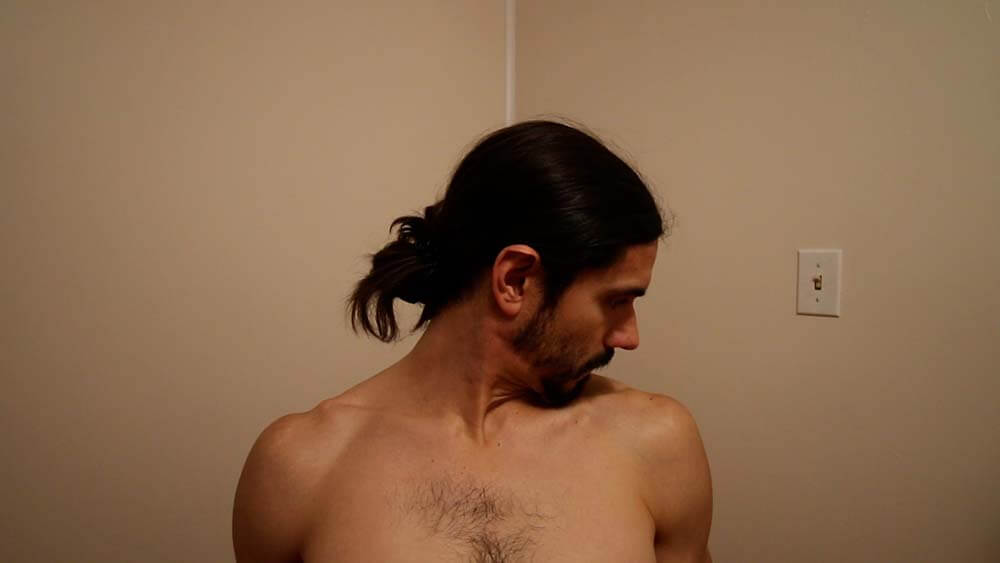
Once you undo side bending, rotate. Trace your chin back across your chest to neutral.
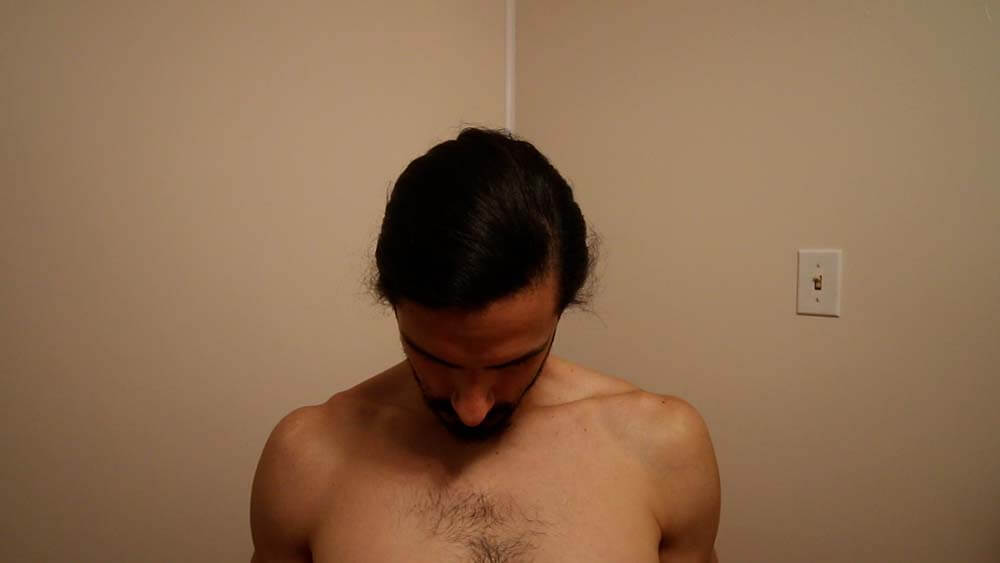
Once you rotate to neutral, extend. Starting at the base of your neck, return each vertebra to its neutral starting position.
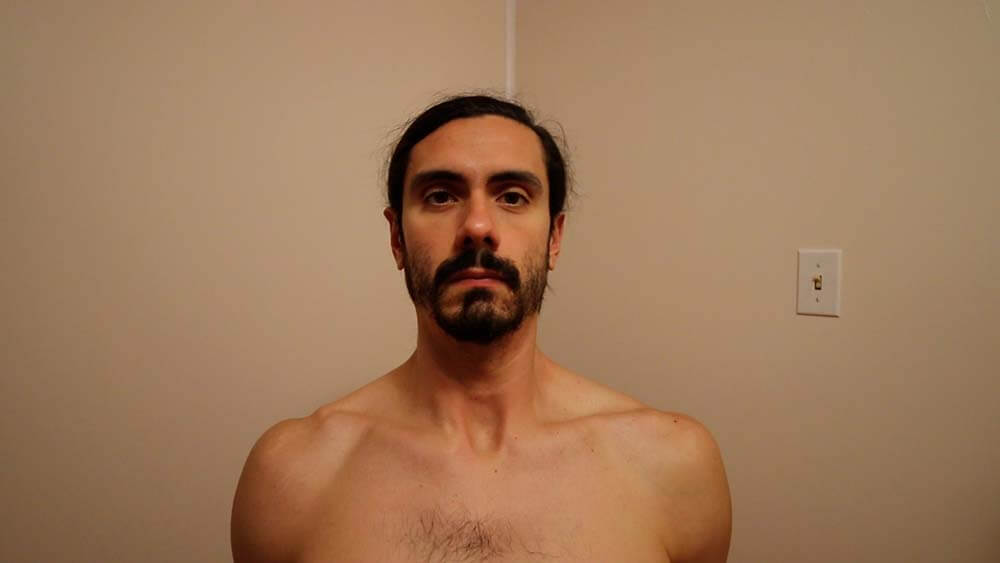
This is ½ rep. To complete a full rep, repeat the sequence in the opposite direction.
Notes:
this where notice compensations… see my body move quite a bit. not perfect, that’s okay.
Parting words.
You should attack troublesome areas with isolated 2-D mobilizations.
You can do these mobilizations from different positions: standing, seated, quadruped…
You can do these mobilizations in reverse order. I went top-down here. In other words, these mobilizations started with the topmost vertebra and work towards the bottom. You can (and should) also go bottom-up from time to time.
Using extension as an example: when you go top-down, the last vertebra does its job with everything up the chain already extended. This means your last vertebra will get better at extending when everything up the chain is already extended. If you work bottom-up, then the last vertebra extends with the rest of the chain in a neutral position. This means your last vertebra will get better at extending when everything up the chain is neutral.
Doing these mobilizations top-down and bottom-up will give your joints more degrees of freedom.
Completely segmenting your spine is impossible. You’re not gonna have individual control over each vertebra, but programming that vision into your mind will get you closer to that ideal.
Even though complete segmentation is impossible, you want a trending wave in the direction you’re moving. Similarly, you should only feel tension and tightness in the region you’re trying to move. If you’re trying to move the top of your neck and you feel tightness in the bottom of your neck, then the joints in your neck are glued together. The seven joints are behaving more like one single joint. Not good.